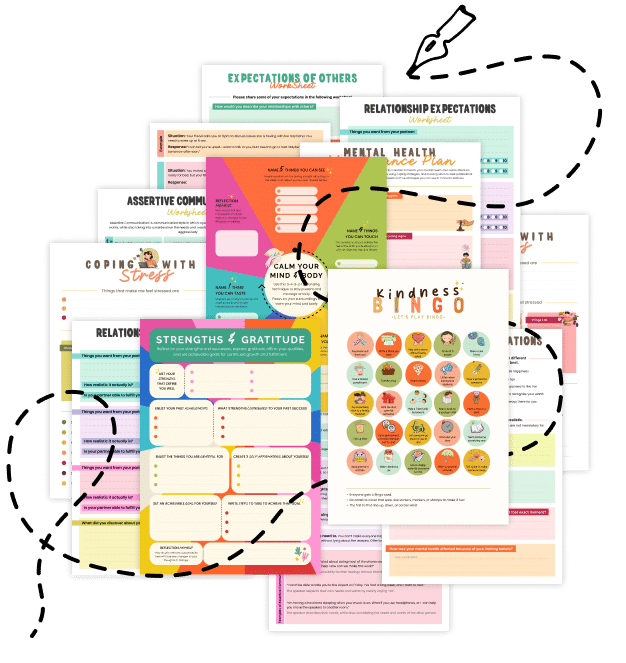20 Things About Relapse Prevention for Habits
Learn effective relapse prevention strategies to maintain positive habits and avoid backsliding into old behaviors. Explore 20 essential insights on identifying triggers, planning ahead, and sustaining long-term success in your habit journey.
1. What Is Relapse Prevention for Habits?
Relapse prevention involves strategies and techniques designed to help you maintain newly formed positive habits and prevent returning to old, undesirable behaviors. It’s a proactive approach that acknowledges the possibility of setbacks and prepares you to handle them effectively.
2. Why It Matters
Forming a new habit is challenging, but maintaining it over time can be even tougher. Relapse prevention ensures you have tools and plans in place to keep you on track after the initial motivation fades.
3. Identifying High-Risk Situations
Certain environments, emotional states, or social contexts can trigger old habits. Being aware of these high-risk situations—like stressful work deadlines or hanging out in environments that encourage the old behavior—helps you prepare appropriate responses.
4. The Role of Triggers
Triggers are cues that prompt a behavior. Recognizing triggers and devising a plan—like substituting a positive action—can significantly lower the risk of reverting to old routines.
5. The Five Stages of Change
Based on the Transtheoretical Model, habits evolve through stages: Precontemplation, Contemplation, Preparation, Action, and Maintenance. Relapse prevention focuses on the Maintenance stage, acknowledging that occasional backslides can occur.
6. Coping Strategies Are Essential
A crucial part of relapse prevention is developing coping strategies—methods to handle cravings, stress, or sudden urges without falling back on old habits. Deep breathing, calling a friend, or taking a quick walk are common examples.
7. Learning from Slips
If a slip does happen, view it as a learning experience rather than a failure. Analyzing what went wrong—like an unrecognized trigger or lack of planning—helps you adjust and move forward.
8. Creating Accountability
Support networks—friends, family, or online communities—provide external accountability. Regular check-ins or shared progress updates can encourage you to remain committed to your new habits.
9. Regular Check-Ins with Yourself
Self-monitoring is key. Journaling or using habit-tracking apps helps you reflect on progress, spot early signs of slipping, and reinforce positive routines.
10. Balancing Motivation and Discipline
Motivation fluctuates; discipline and planned structures carry you through low-motivation periods. Relapse prevention acknowledges that relying solely on willpower can be risky without concrete strategies in place.
11. Avoid All-or-Nothing Thinking
A single slip doesn’t erase all your progress. Black-and-white thinking can lead to giving up entirely when a minor setback occurs. Relapse prevention teaches you to quickly recalibrate and continue.
12. Celebrating Milestones
Reward yourself for hitting major or minor milestones. Positive reinforcement keeps morale high and cements the new habit into your routine.
13. Stress Management
High stress often leads to relapse. Incorporating stress-reduction techniques—like mindfulness, exercise, or hobbies—serves as a buffer against returning to old coping mechanisms.
14. Structured Environment
Environmental design—arranging your surroundings to support your new habit—lowers the risk of relapse. For instance, if you’re trying to eat healthier, keep nutritious foods visible and junk snacks out of easy reach.
15. Avoiding Complacency
Success can sometimes breed complacency. Once a habit feels ingrained, people may let their guard down, increasing the risk of slipping back. Continued vigilance supports long-term maintenance.
16. Mindset Overhaul
Relapse prevention often involves cognitive restructuring—transforming negative self-talk (“I’m bound to fail”) into constructive, solution-focused thoughts (“I can adapt and move forward”).
17. Using Implementation Intentions
Formulate “if-then” plans for risky scenarios. For instance, “If I feel stressed at work, then I’ll take a 5-minute break to breathe instead of reaching for sugary snacks.”
18. Personalization Is Key
Each individual’s triggers, stressors, and motivations differ. Tailoring your relapse prevention plan to your unique habits and lifestyle ensures a higher chance of success.
19. Long-Term Perspective
Habits can take weeks or months to fully cement, and maintenance is ongoing. Shifting your mindset from a short-term sprint to a lifelong journey fosters resilience and patience.
20. Related Topics to Explore
- Task-Specific Anxiety Management: Handling stress that might trigger old habits.
- Adaptive Confidence: Maintaining realistic self-belief through habit challenges.
- Cognitive Defusion: Techniques to detach from unhelpful thoughts that fuel old behaviors.
- Implementation Intentions: Creating structured “if-then” plans to ensure consistency.
Quick Tips for Effective Relapse Prevention
- Know Your Triggers: List environments or moods that prompt old habits.
- Plan Coping Strategies: Decide in advance how to handle cravings or urges.
- Stay Accountable: Share goals with supportive friends, mentors, or online communities.
- Monitor Progress: Use habit-tracking tools to maintain awareness and motivation.
- Celebrate Resilience: Each time you resist old habits, acknowledge your success.
Relapse Prevention for Habits is all about safeguarding the progress you’ve worked hard to achieve. By identifying triggers, planning coping strategies, and building a supportive environment, you’ll reduce the risk of slipping back into old behaviors. Even if a lapse occurs, it’s not the end—regard it as a learning experience. With consistency, self-awareness, and the right strategies, you can maintain positive habits that enrich your life for the long haul.
Share this article with anyone determined to preserve their hard-earned habits. With a proactive approach and a flexible mindset, you can remain on track, turning new behaviors into lasting, transformative changes!

